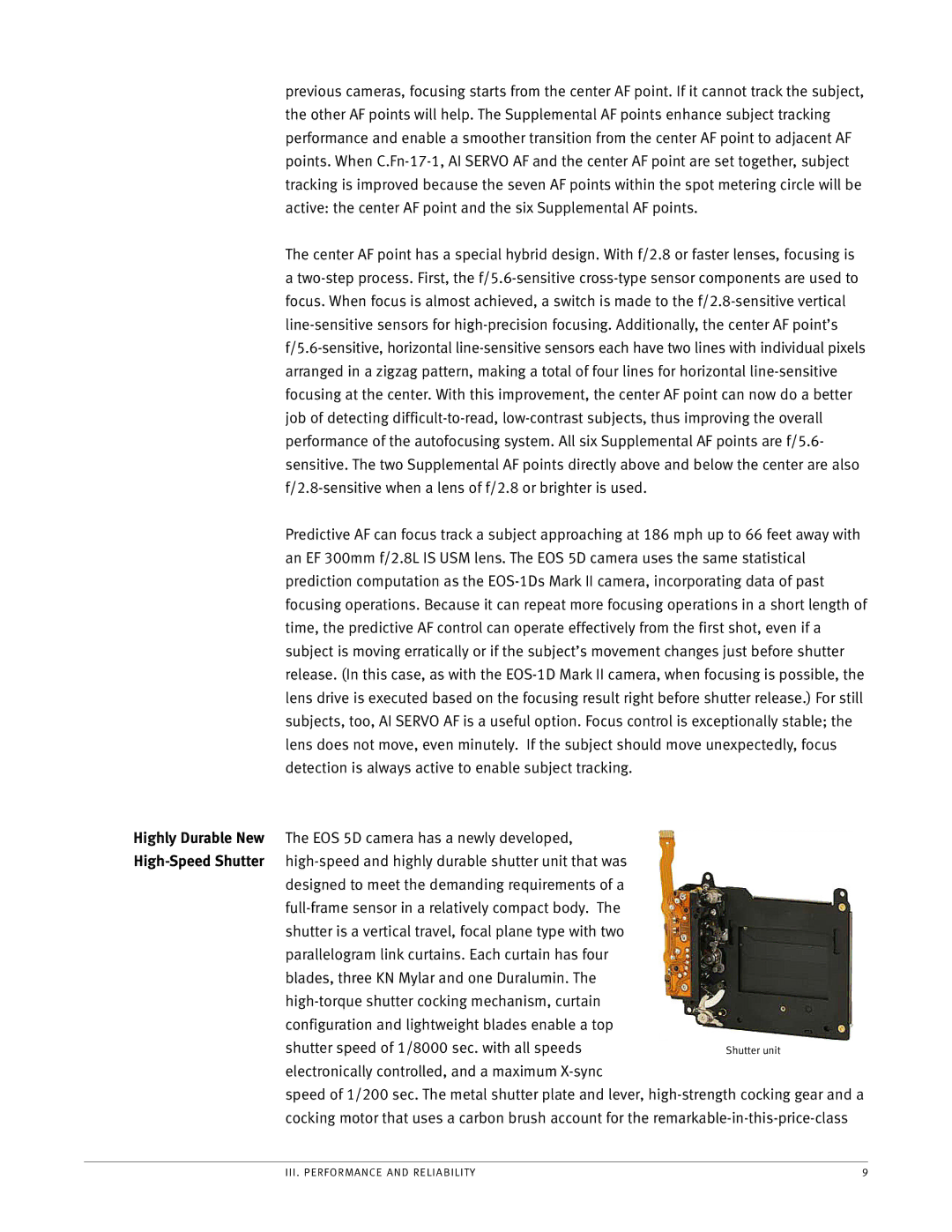previous cameras, focusing starts from the center AF point. If it cannot track the subject, the other AF points will help. The Supplemental AF points enhance subject tracking performance and enable a smoother transition from the center AF point to adjacent AF points. When C.Fn-17-1, AI SERVO AF and the center AF point are set together, subject tracking is improved because the seven AF points within the spot metering circle will be active: the center AF point and the six Supplemental AF points.
The center AF point has a special hybrid design. With f/2.8 or faster lenses, focusing is a two-step process. First, the f/5.6-sensitive cross-type sensor components are used to focus. When focus is almost achieved, a switch is made to the f/2.8-sensitive vertical line-sensitive sensors for high-precision focusing. Additionally, the center AF point’s f/5.6-sensitive, horizontal line-sensitive sensors each have two lines with individual pixels arranged in a zigzag pattern, making a total of four lines for horizontal line-sensitive focusing at the center. With this improvement, the center AF point can now do a better job of detecting difficult-to-read, low-contrast subjects, thus improving the overall performance of the autofocusing system. All six Supplemental AF points are f/5.6- sensitive. The two Supplemental AF points directly above and below the center are also f/2.8-sensitive when a lens of f/2.8 or brighter is used.
Predictive AF can focus track a subject approaching at 186 mph up to 66 feet away with an EF 300mm f/2.8L IS USM lens. The EOS 5D camera uses the same statistical prediction computation as the EOS-1Ds Mark II camera, incorporating data of past focusing operations. Because it can repeat more focusing operations in a short length of time, the predictive AF control can operate effectively from the first shot, even if a subject is moving erratically or if the subject’s movement changes just before shutter release. (In this case, as with the EOS-1D Mark II camera, when focusing is possible, the lens drive is executed based on the focusing result right before shutter release.) For still subjects, too, AI SERVO AF is a useful option. Focus control is exceptionally stable; the lens does not move, even minutely. If the subject should move unexpectedly, focus detection is always active to enable subject tracking.
Highly Durable New The EOS 5D camera has a newly developed,
High-Speed Shutter high-speed and highly durable shutter unit that was
designed to meet the demanding requirements of a full-frame sensor in a relatively compact body. The shutter is a vertical travel, focal plane type with two parallelogram link curtains. Each curtain has four blades, three KN Mylar and one Duralumin. The high-torque shutter cocking mechanism, curtain configuration and lightweight blades enable a top shutter speed of 1/8000 sec. with all speeds electronically controlled, and a maximum X-sync
speed of 1/200 sec. The metal shutter plate and lever, high-strength cocking gear and a cocking motor that uses a carbon brush account for the remarkable-in-this-price-class

